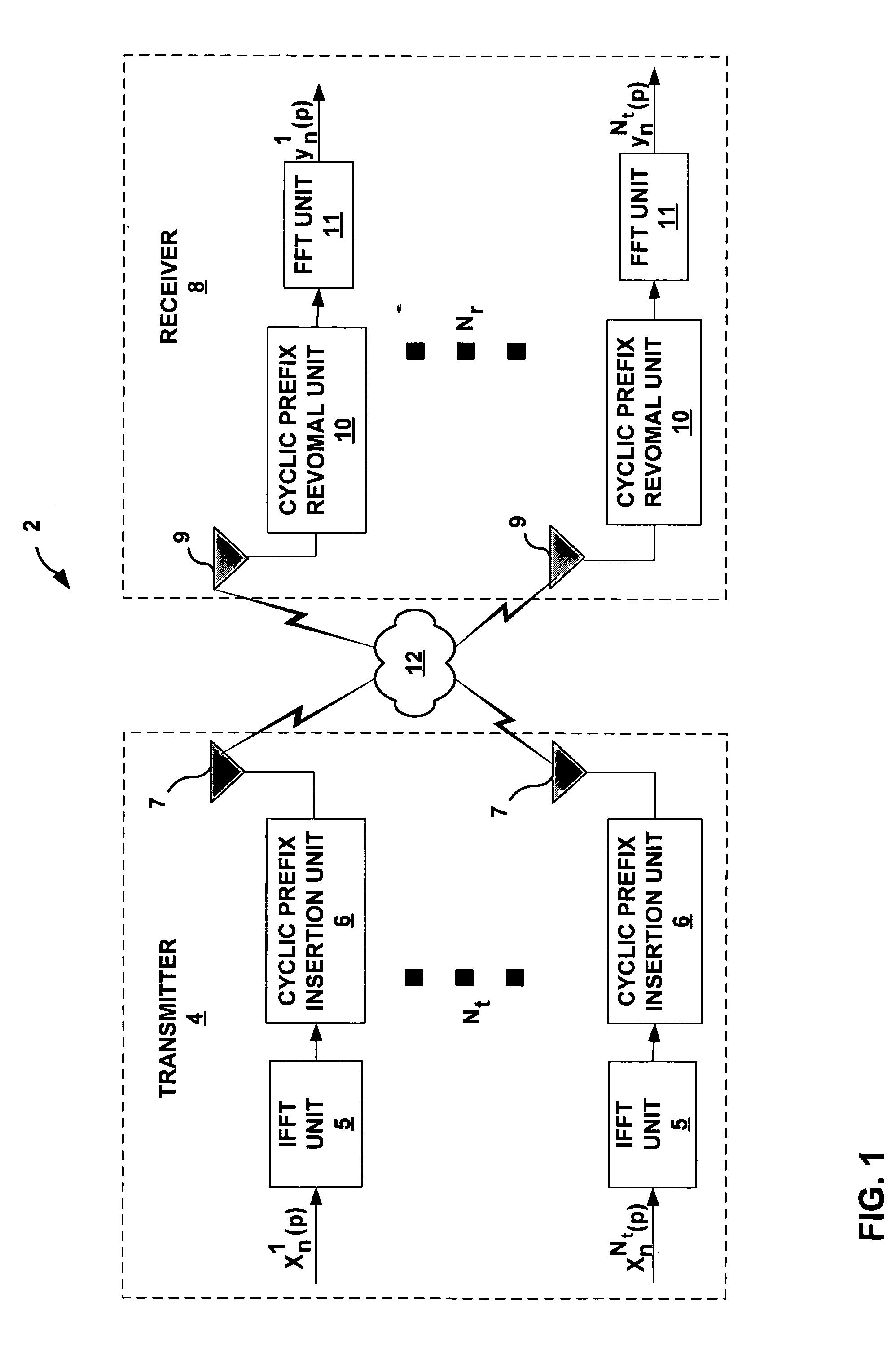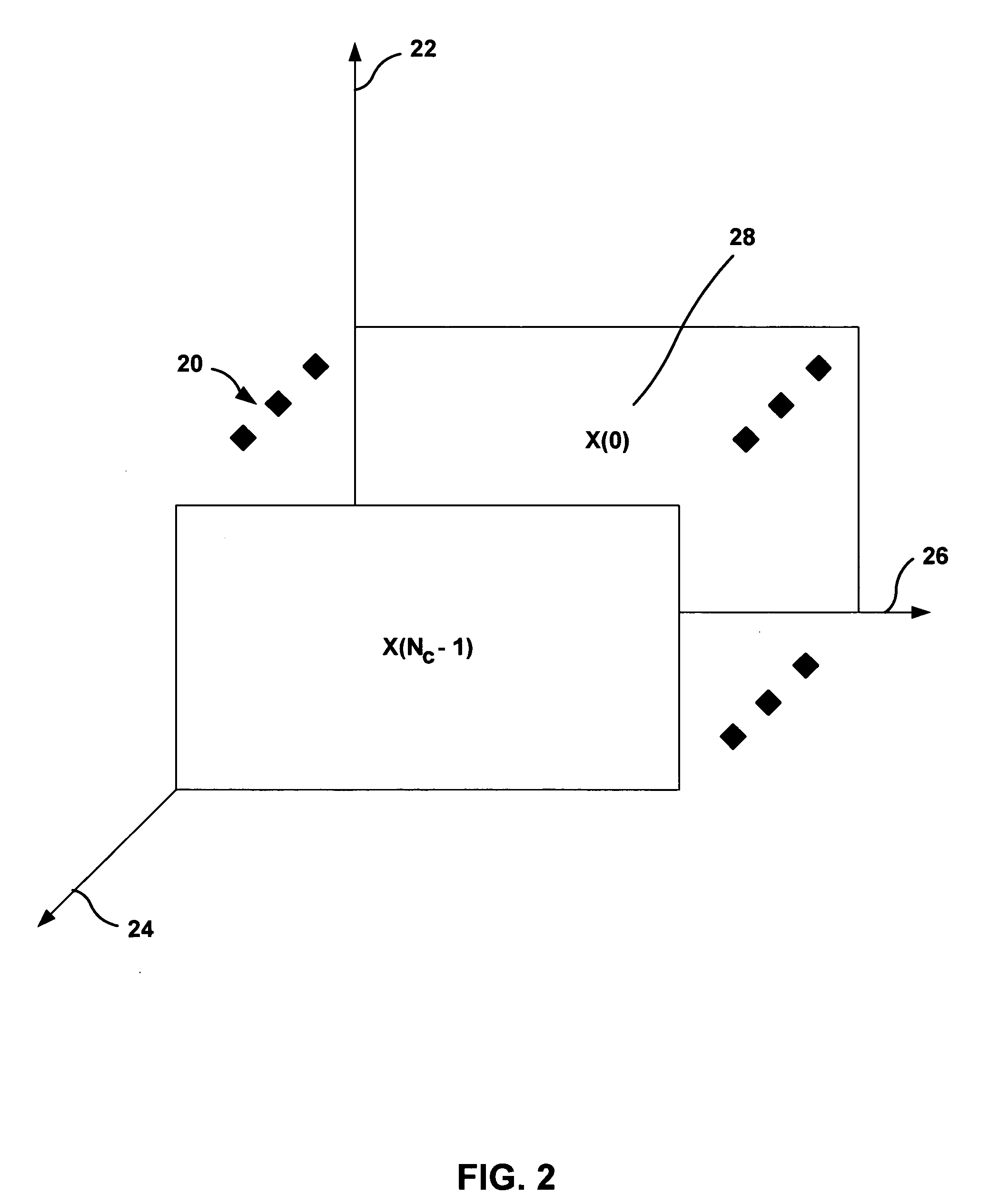Space-time-frequency coded OFDM communications over frequency-selective fading channels
a space-time frequency and channel technology, applied in the field of communication systems, can solve the problems of severe impairing the performance of a wireless communication system, performance degradation, bottleneck for increasing data rates, etc., and achieves low decoding complexity, high coding gains, and maximum diversity
- Summary
- Abstract
- Description
- Claims
- Application Information
AI Technical Summary
Benefits of technology
Problems solved by technology
Method used
Image
Examples
Embodiment Construction
Throughout the Detailed Description, bold upper letters denote matrices, bold lower letters stand for column vectors; (●)T, (●)*, and (●)H denote transpose, conjugate, and conjugate transpose, respectively; diag(d1, . . . , dp) denotes a P×P diagonal matrix with diagonal entries d1, . . . , dp; and Ip stands for the P×P identity matrix.
FIG. 1 is a block diagram illustrating multi-antenna orthogonal frequency-division multiplexing (OFDM) wireless communication system 2 in which transmitter 4 communicates data to receiver 8 through wireless channel 12. In particular, FIG. 1 illustrates the discrete-time equivalent baseband model in which transmitter 4 transmits data with Nt transmit antennas 7 and receiver 8 receives data with Nr receive antennas 9. OFDM has been adopted by many standards including digital audio and video broadcasting (DAB, DVB) in Europe and high-speed digital subscriber lines (DSL) in the United States. OFDM has also been proposed for local area mobile wireless br...
PUM
 Login to View More
Login to View More Abstract
Description
Claims
Application Information
 Login to View More
Login to View More - R&D
- Intellectual Property
- Life Sciences
- Materials
- Tech Scout
- Unparalleled Data Quality
- Higher Quality Content
- 60% Fewer Hallucinations
Browse by: Latest US Patents, China's latest patents, Technical Efficacy Thesaurus, Application Domain, Technology Topic, Popular Technical Reports.
© 2025 PatSnap. All rights reserved.Legal|Privacy policy|Modern Slavery Act Transparency Statement|Sitemap|About US| Contact US: help@patsnap.com



